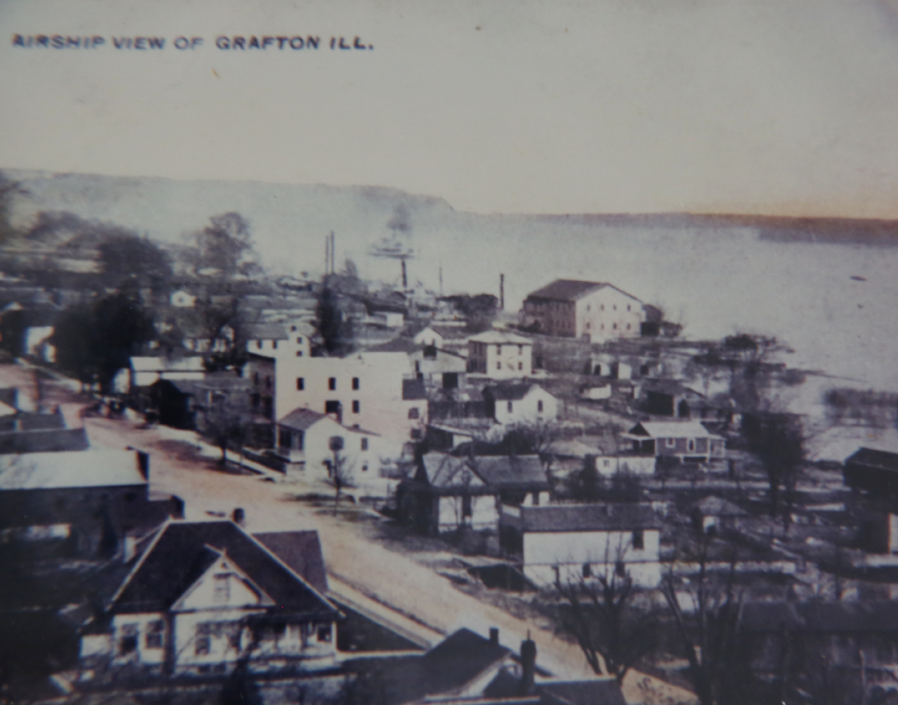
About Grafton
It all starts with the Rivers! People have moved themselves, their belongings and materials up and down rivers since prehistoric times. They have looked for places to go, places to cross and places to stop. James Mason came west from Massachusetts looking for such a place. At the confluence of the Mississippi and Illinois Rivers, Mason envisioned a community where grist, woolen, cotton mills and general manufacturing could happen and become a hub for trading and shipping.
A license to operate a ferry across the two rivers was granted to Mason in 1833. Unfortunately, Mason’s dream was cut short with his death in the 1834. However, his widow Sarah and brother Paris assumed the responsibility for surveying, platting, selling lots and incorporating a town in 1836. Mrs. Mason named the town Grafton in honor of her husband’s birthplace in Massachusetts.
One of the earliest structures in the new community was a wharf. It served as a focal point for the fishing and shipping business in the city. Because of its location, it is natural that river industries sprang up. As early as 1876, boat building became an important industry. Barges, steam towboats, ferries, lifeboats, fishing boats and other vessels were built here. Quarries provided jobs for up to 2,000 men and provided magnesia limestone that was used to construct buildings throughout the region including the Eades Bridge in St. Louis. In 1907 a manufacturing plant was built to produce explosives. Mussels in the river provided the raw material for the production of buttons.
By 1867 Grafton’s business community was comprised of:
- 5 general stores
- 2 blacksmith shops
- 1 drug store
- 1 wagon shop
- 1 butcher shop
- 2 shoe shops
- 1 harness maker
- 1 tin shop
- 2 flour/grist mills
- 1 watchmaker and silver smith
- 1 mill for sawing rock
- 3 cooper shops
- 2 physicians
Floods have always been part of life in Grafton. Everything from “nuisance” floods to the great flood of 1993 that devastated Grafton and the Riverbend area have shaped the community. While there had been a decline in industry over the years, the 1993 flood changed the revenue focus of the town from manufacturing to the tourism industry. Today you will experience an authentic river town where you can enjoy the scenic beauty of the rivers and bluffs, experience a variety of recreational activities, explore unique shops and take time to relax in one of the towns variety of restaurants and bars. The rivers offer an ever changing panorama of activities, from barges hauling the nations products to a variety recreational boats that allow people to enjoy being on the river.
Welcome to Grafton! Come for a weekend! Stay for a lifetime!